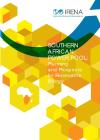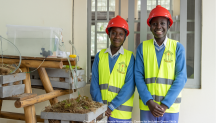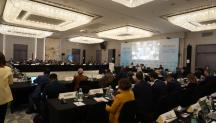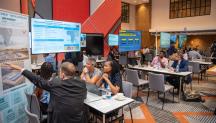

Southern African Power Pool: Planning and Prospects for Renewable Energy
Newsletter
With the energy systems of many African countries dominated by fossil-fuel sources that are vulnerable to global price volatility, regional and intra-continental power systems with high shares of renewable energy can provide least-cost option to support continued economic growth and address the continent’s acute energy access problem. Unlocking Africa’s huge renewable energy potential could help to take many people out of poverty, while ensuring the uptake of sustainable technologies for the continent’s long-term development.
IRENA’s report, Southern African Power Pool: Planning and Prospects for Renewable Energy, examines the “renewable scenario” based on a modelling tool developed by IRENA and tested in cooperation with the South African National Energy Development Institute (SANEDI) and the Southern African Development Community (SADC). Initial results from the System Planning and Test (SPLAT) model show that the share of renewable technologies in Southern Africa could increase from the current 10% to as much as 46% in 2030, with 20% of decentralised capacity coming from renewable sources and nearly 80% of the envisaged capacity additions between 2010 and 2030 being provided by renewable energy technologies. Deployment and export of hydropower from the Democratic Republic of Congo’s Inga hydropower project to the SADC region would significantly reduce average electricity generation costs.
Analysis using SPLAT – along with a similar model developed for West Africa – can provide valuable input for regional dialogue and energy projects such as the East and Southern Africa Clean Energy Corridor and the Programme for Infrastructure and Development in Africa (PIDA). IRENA, together with partner organisations, has started plans to set up capacity building and development support for energy system modelling and planning for greater integration of renewables in Africa. IRENA is also completing a similar model and study for East Africa and intends to extend this work to Central and North Africa.
All data and results presented on this report can be found here.




